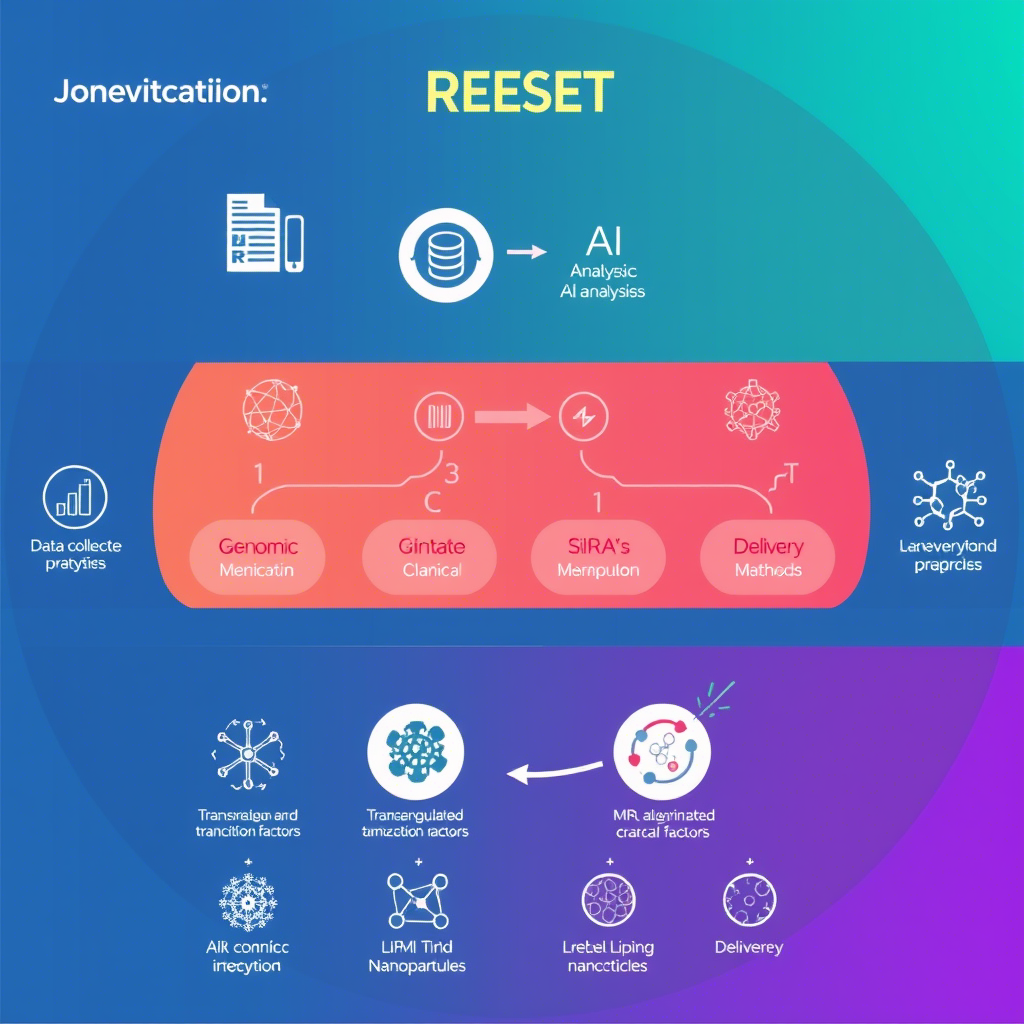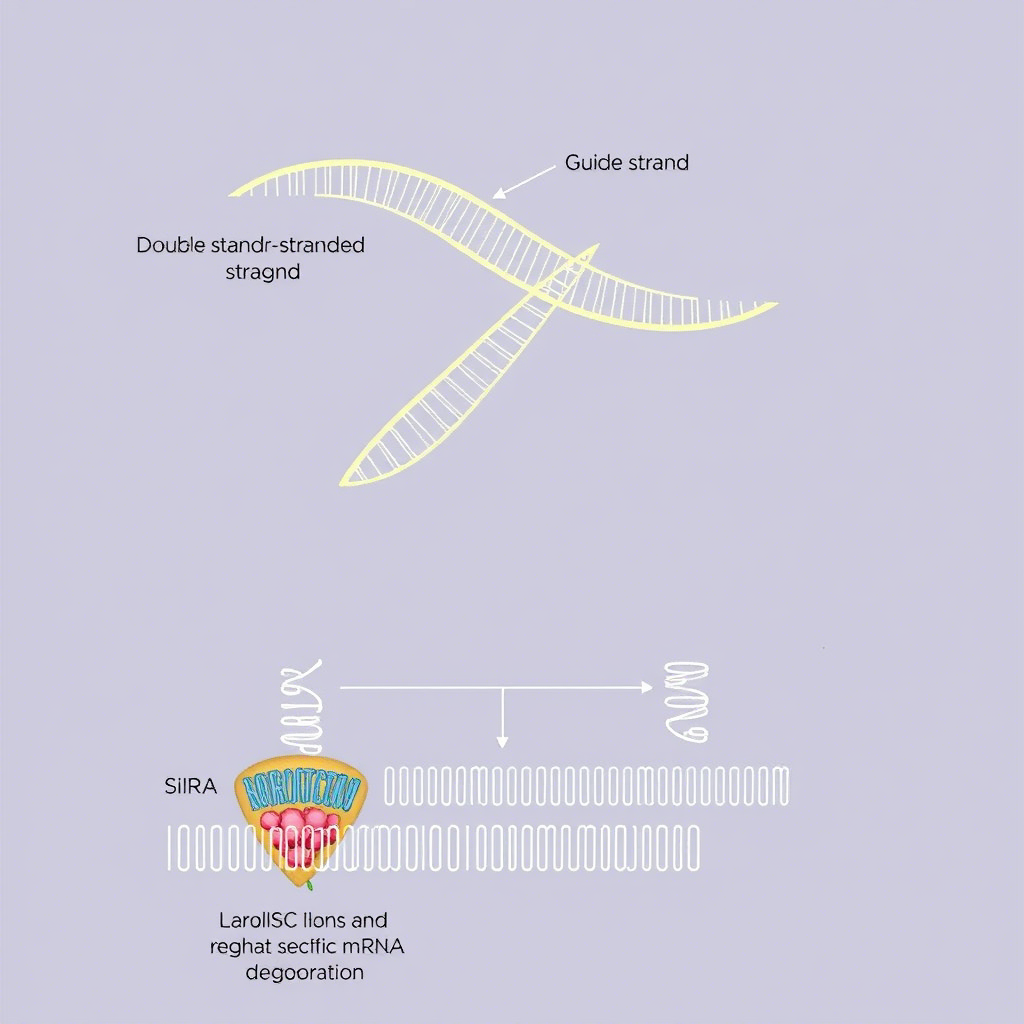Introduction
The Junevity RESET platform represents a groundbreaking approach to addressing diseases of aging by targeting transcription factors—proteins that regulate gene expression—at the cellular level. This innovative biotechnological strategy leverages large-scale human data, artificial intelligence (AI), and RNA interference (RNAi) therapeutics to identify and modulate key transcription factors responsible for cellular damage in conditions like Type 2 diabetes, obesity, frailty, and neurodegeneration. By resetting cells to a healthier state, Junevity aims to develop therapies that not only treat these diseases but also extend human longevity.
This document delves into the scientific and technological foundations of the RESET platform, its applications in disease treatment, and its potential impact on human health. Each section provides a detailed explanation of the biotechnological processes involved, making complex concepts accessible to readers with varying levels of scientific expertise.
1. The Science Behind Transcription Factors and Cellular Damage

What Are Transcription Factors?
Transcription factors are proteins that bind to specific DNA sequences to control the transcription of genetic information from DNA to messenger RNA (mRNA). They act as molecular switches, turning genes “on” or “off,” thereby regulating the production of proteins essential for cellular function. Dysregulation of transcription factors is a hallmark of many age-related diseases, where abnormal gene expression leads to cellular dysfunction and damage.
Role of Transcription Factors in Aging and Disease
Aging is associated with widespread changes in gene expression, often driven by dysregulated transcription factors. For example:
- In Type 2 diabetes, impaired insulin signaling pathways result from altered transcription factor activity, leading to reduced glucose uptake and insulin resistance.
- In obesity, transcription factors that regulate adipose tissue metabolism and energy balance become overactive or underactive, promoting fat accumulation and metabolic dysfunction.
- In frailty, transcription factors controlling muscle repair and regeneration are suppressed, contributing to muscle wasting and weakness.
By identifying and targeting these dysregulated transcription factors, it is possible to restore normal gene expression patterns and reverse cellular damage.
2. The RESET Platform: Leveraging AI and Big Data
Data Collection and Analysis

The RESET platform begins with the collection of vast amounts of human biological data, including:
- Genomic data (DNA sequences)
- Transcriptomic data (gene expression profiles)
- Proteomic data (protein levels and interactions)
- Clinical data (patient outcomes and disease progression)
These datasets are integrated using advanced AI algorithms to identify transcription factors that play critical roles in specific diseases. Machine learning models analyze patterns in the data to rank and prioritize potential therapeutic targets based on their likelihood of success.
The Cell RESET Atlas
The output of this analysis is the Cell RESET Atlas, a comprehensive database of transcription factor targets organized by cell type and disease. For example:
- In pancreatic beta cells (relevant to Type 2 diabetes), the atlas identifies transcription factors that regulate insulin production and secretion.
- In adipocytes (fat cells), it highlights factors controlling lipid storage and energy expenditure.
This atlas serves as a roadmap for developing targeted therapies.
3. RNA Interference (RNAi) Therapeutics
How RNAi Works

RNA interference (RNAi) is a natural biological process that uses small interfering RNAs (siRNAs) to silence specific genes. siRNAs are short double-stranded RNA molecules that bind to complementary mRNA sequences, marking them for degradation by cellular machinery. This prevents the translation of mRNA into protein, effectively “turning off” the target gene.
Advantages of siRNA Therapeutics
- High Specificity:siRNAs can be designed to target a single gene with minimal off-target effects.
- Long-Lasting Effects:Once delivered to cells, siRNAs can remain active for weeks or months, enabling infrequent dosing (e.g., once every 3-12 months).
- Broad Applicability:siRNA therapeutics can target virtually any gene, making them suitable for a wide range of diseases.
Junevity’s Approach
Junevity designs siRNA molecules to silence dysregulated transcription factors identified by the RESET platform. These siRNAs are then delivered to specific tissues using advanced delivery systems, such as lipid nanoparticles (LNPs) or conjugated antibodies, ensuring precise targeting and minimal side effects.
4. Preclinical Success Stories
Type 2 Diabetes
Junevity’s first siRNA therapeutic candidate targets a transcription factor involved in insulin resistance. In preclinical studies using diabetic mice:
- The therapy improved glucose control and insulin sensitivity.
- It did not cause weight gain or other side effects commonly associated with traditional insulin sensitizers like thiazolidinediones.
Obesity
The second siRNA candidate targets a transcription factor that regulates adipose tissue metabolism and appetite. Results in obese mice showed:
- Improved fat metabolism and reduced food intake.
- A 30% reduction in body weight compared to controls, primarily due to fat loss while preserving lean muscle mass.
These findings demonstrate the potential of the RESET platform to address complex metabolic disorders with high specificity and efficacy.
5. Broader Implications for Human Health
Addressing Multiple Diseases of Aging
By targeting transcription factors implicated in various age-related conditions, the RESET platform has the potential to:
- Reverse cellular damage in neurodegenerative diseases like Alzheimer’s and Parkinson’s.
- Enhance muscle repair and regeneration in frailty and sarcopenia.
- Improve cardiovascular health by targeting factors involved in atherosclerosis and hypertension.
Extending Human Longevity
Ultimately, Junevity’s goal is to extend healthy lifespan by addressing the root causes of aging at the cellular level. By restoring normal gene expression patterns, the RESET platform could delay the onset of age-related diseases and improve overall quality of life.
6. Challenges and Future Directions
Challenges
- Delivery Systems:Ensuring efficient and safe delivery of siRNAs to target tissues remains a significant hurdle.
- Off-Target Effects:Although siRNAs are highly specific, unintended silencing of non-target genes must be minimized.
- Regulatory Approval:Navigating the regulatory landscape for novel RNA-based therapies requires extensive clinical testing.
Future Directions
- Expanding the Cell RESET Atlas to include more cell types and diseases.
- Developing next-generation delivery technologies to enhance tissue specificity.
- Collaborating with pharmaceutical partners to accelerate clinical development.
Conclusion
The Junevity RESET platform represents a transformative approach to treating diseases of aging by targeting transcription factors at the cellular level. By combining cutting-edge AI, big data analytics, and RNAi therapeutics, Junevity is poised to revolutionize the field of biotechnology and make significant strides toward extending human longevity. As the company advances its pipeline of therapeutic candidates, the potential impact on global health is immense.
Final Answer:


The Junevity RESET platform uses AI-driven analysis of large-scale human data to identify dysregulated transcription factors linked to diseases of aging. It develops siRNA therapeutics to silence these targets, restoring cellular health and offering promising treatments for Type 2 diabetes, obesity, frailty, and beyond.
